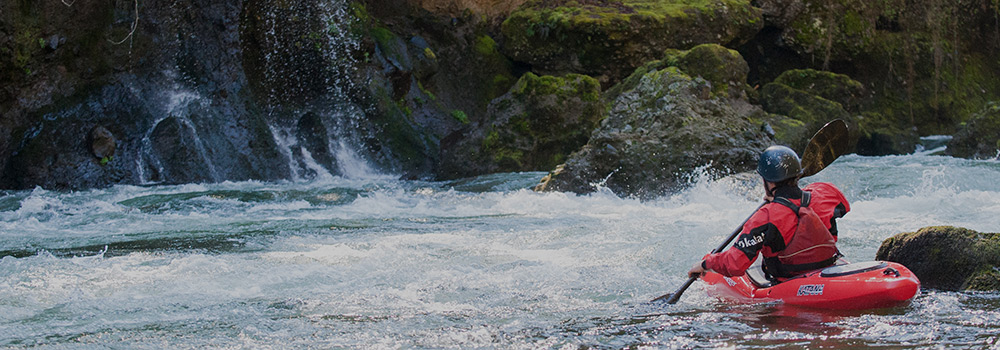The following concepts will help you develop good form as you take to the water.
- Sit up straight. Your mother was right. Posture is important- for balance, efficiency and safety. Imagine that the heaviest parts of your body-head, chest, abdomen, hips, and rear end – are blocks in a tower. Keep them evenly stacked for beginning techniques; it’s when they come out of alignment that the tower (and your boat) is more likely to topple. Staying loose in the hips allows the boat to rock under you.
- Use the big muscles. Instead of bicycling your hands out and back with each stroke, keep arms relatively straight. Paddling with arms alone is inefficient and fatiguing. Your chest, back and stomach muscles are much sturdier, so they’re better suited for the task. Paddling slightly stiff-armed is a method for learning efficient strokes. It forces use of the larger muscles.
- Be shoulder safe. Shoulder injuries are not uncommon in paddlesports. To protect your shoulders, keep your hands in front of your body. When placing a paddle blade behind you, turn to look at it, rotating your shoulders into a safe position.
- Different strokes. An entire vocabulary of strokes exists for every direction a boat can travel. Take a class to learn them all properly. Until then, remember these rules:
- Keep the paddle blade perpendicular to the desired direction of travel. Forward strokes run parallel to the boat’s centerline. To move sideways away from the bank or dock, put the blade in the water parallel to your boat and pull yourself over to the blade. This is called a draw stroke.
- Steer at the ends. You’ll get more mechanical advantage from turning strokes by doing them close to the ends of your boat. Sweep strokes are great for turning, tracing broad arcs to and from the bow or stern.
Information on this page is provided through our partnership with American Canoe Association (ACA) by staff writer Becky Molina.
For comprehensive guides on paddling, please visit the ACA website.


